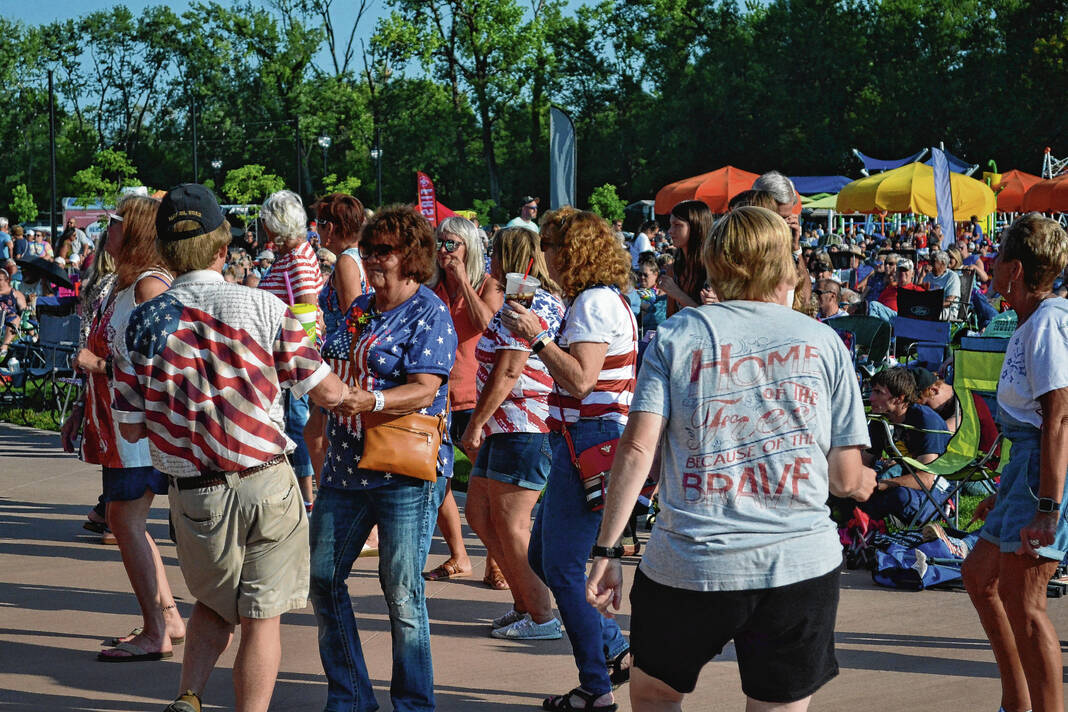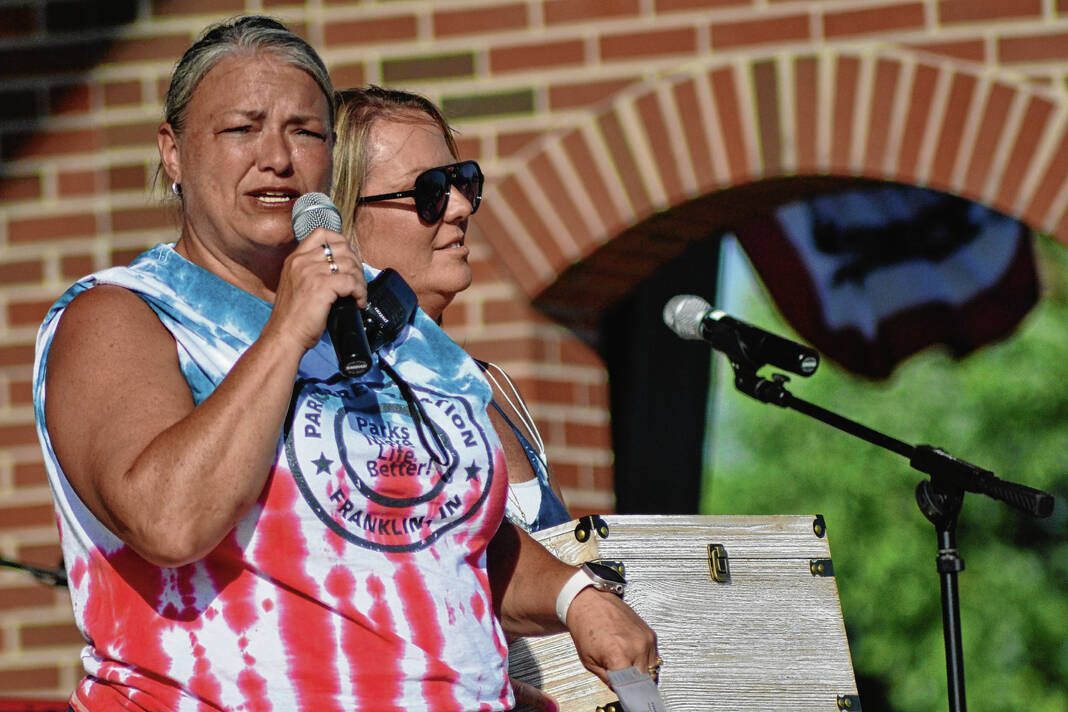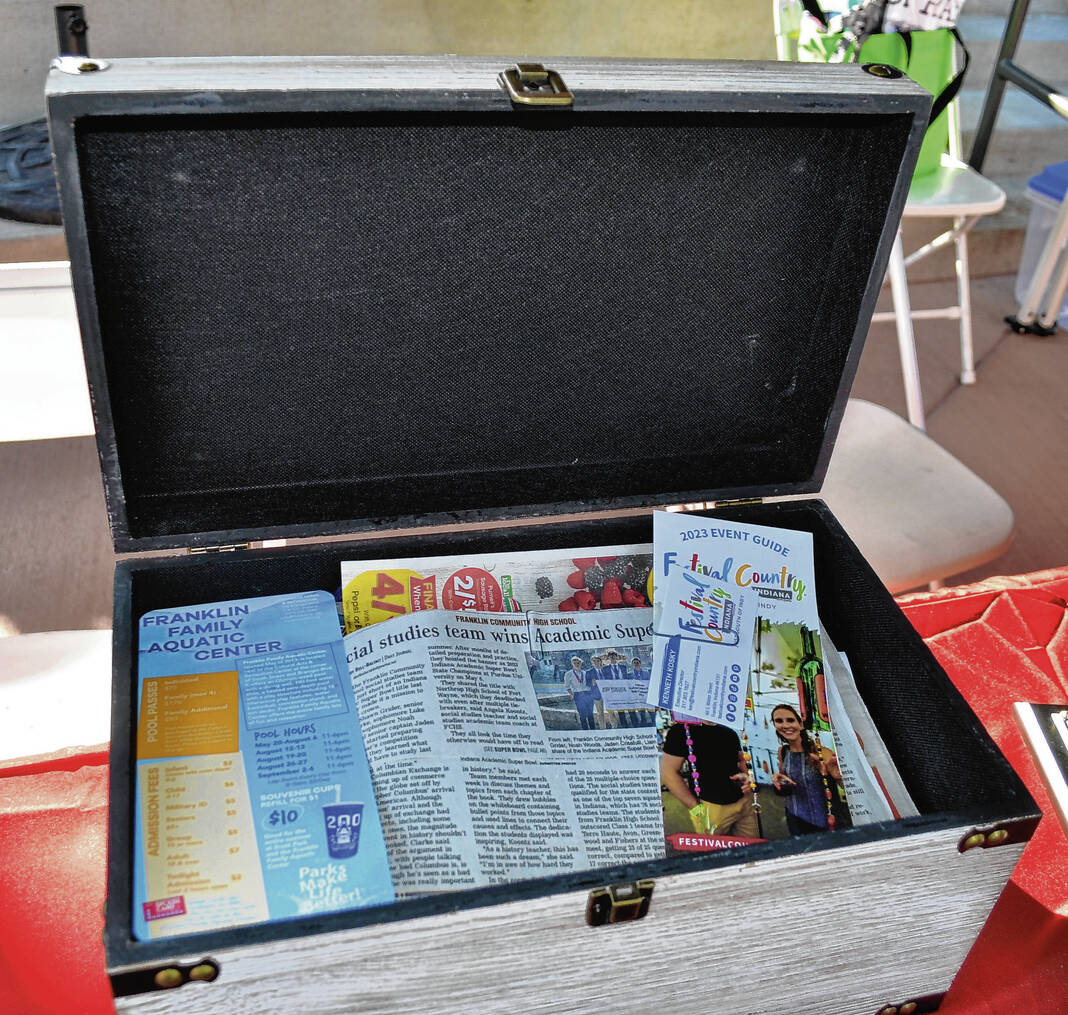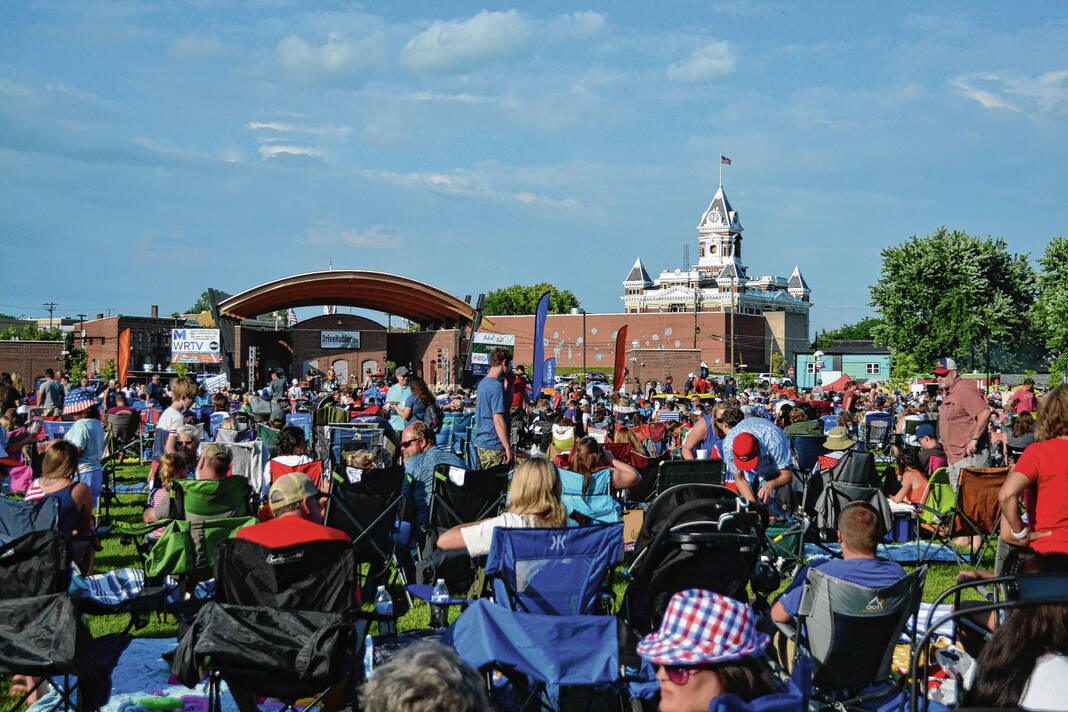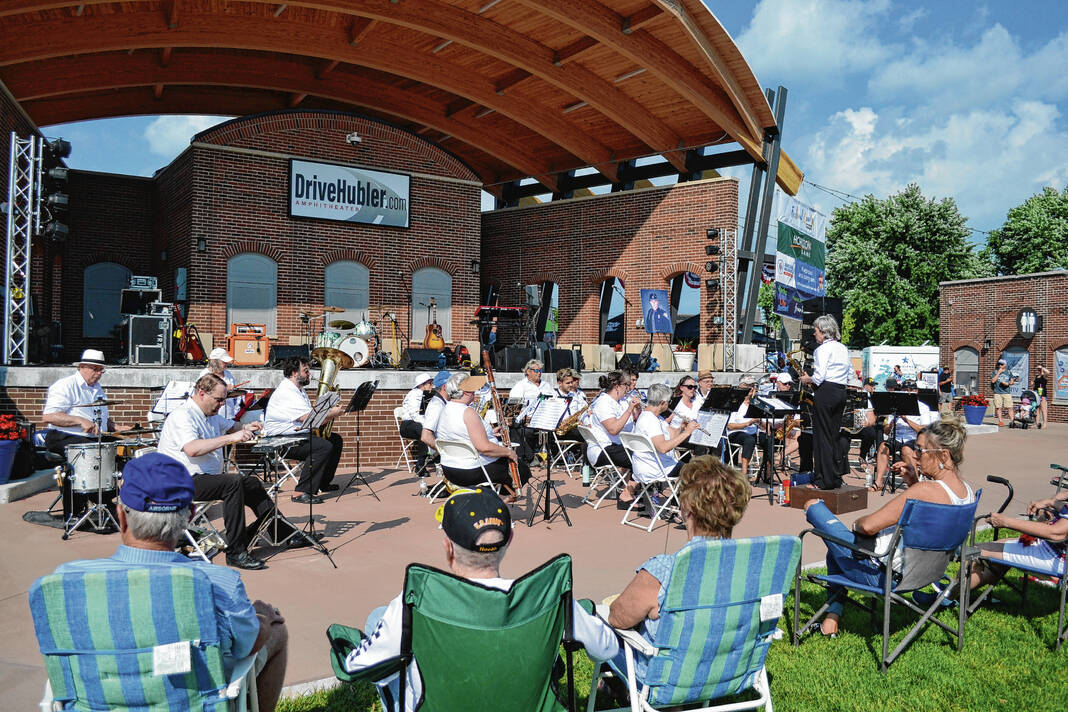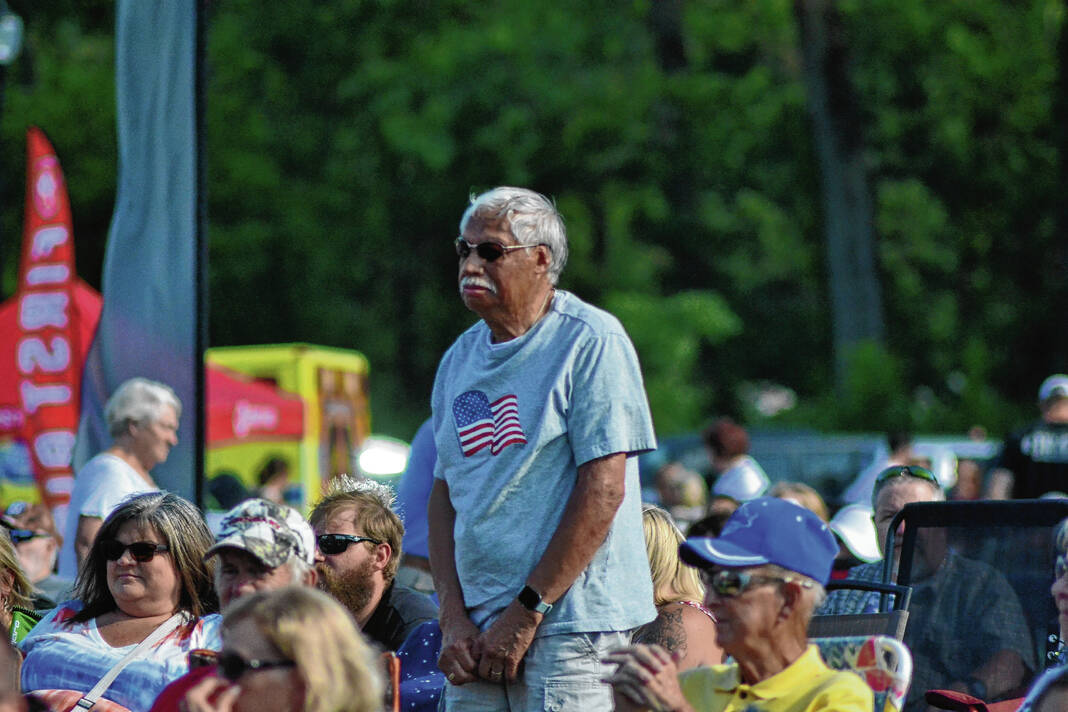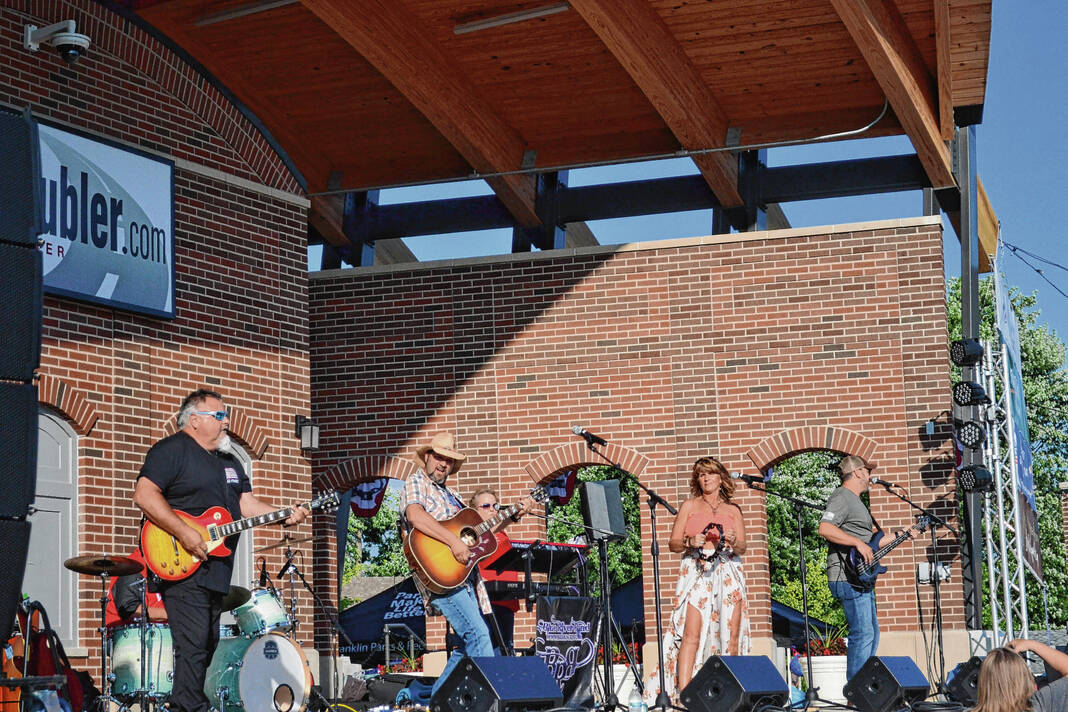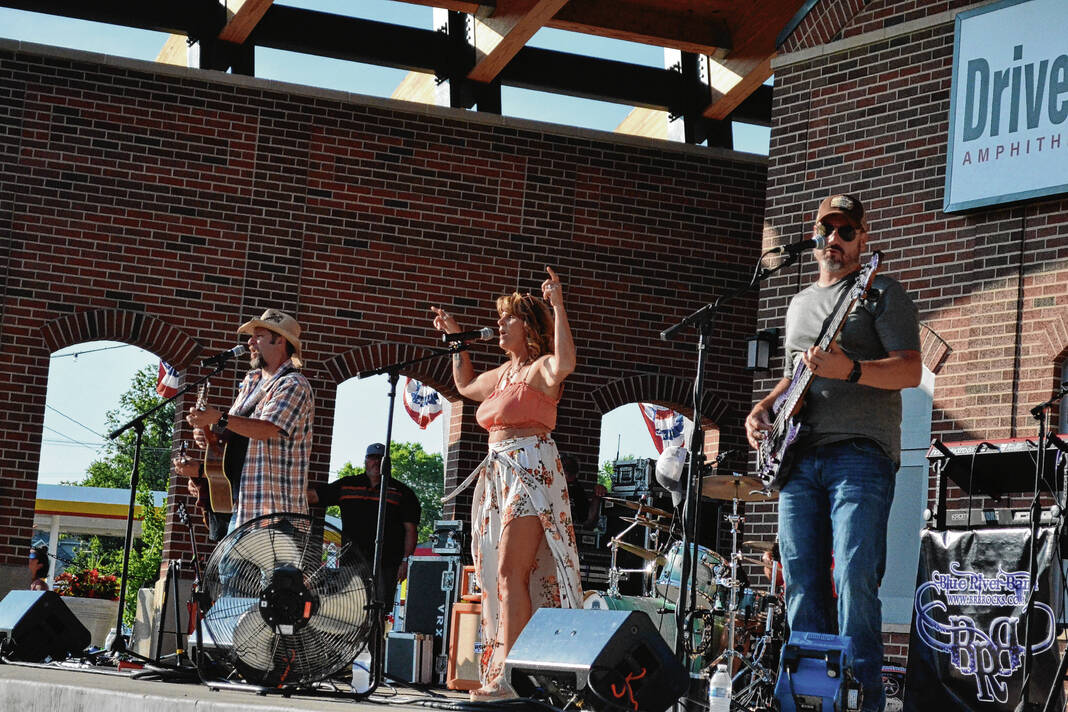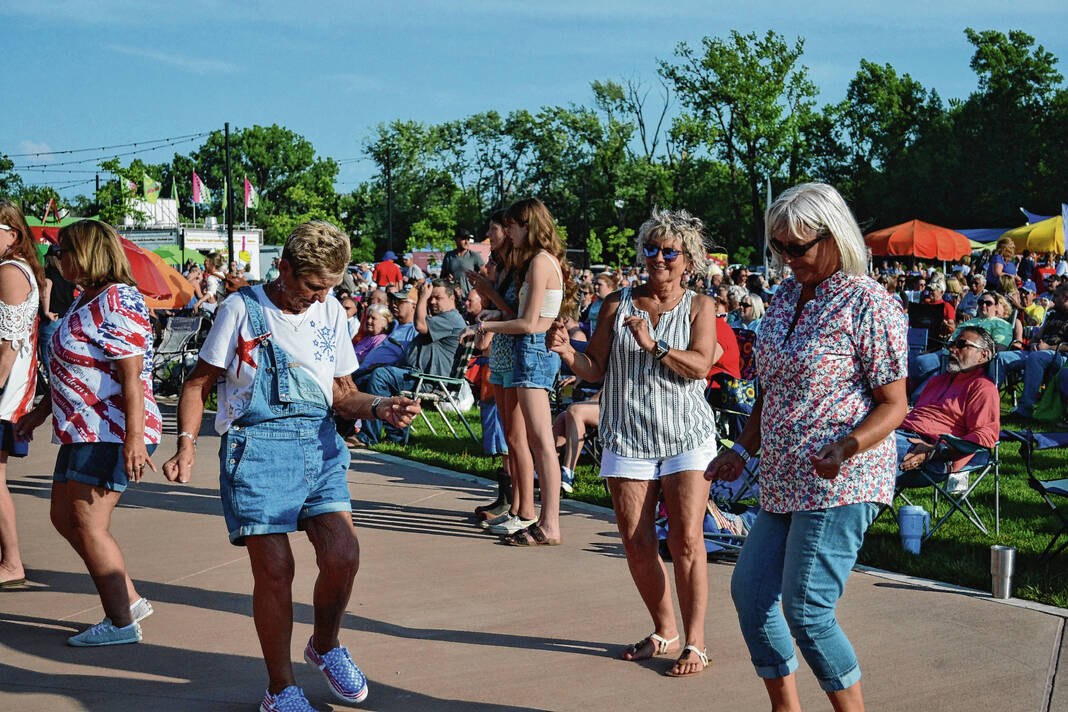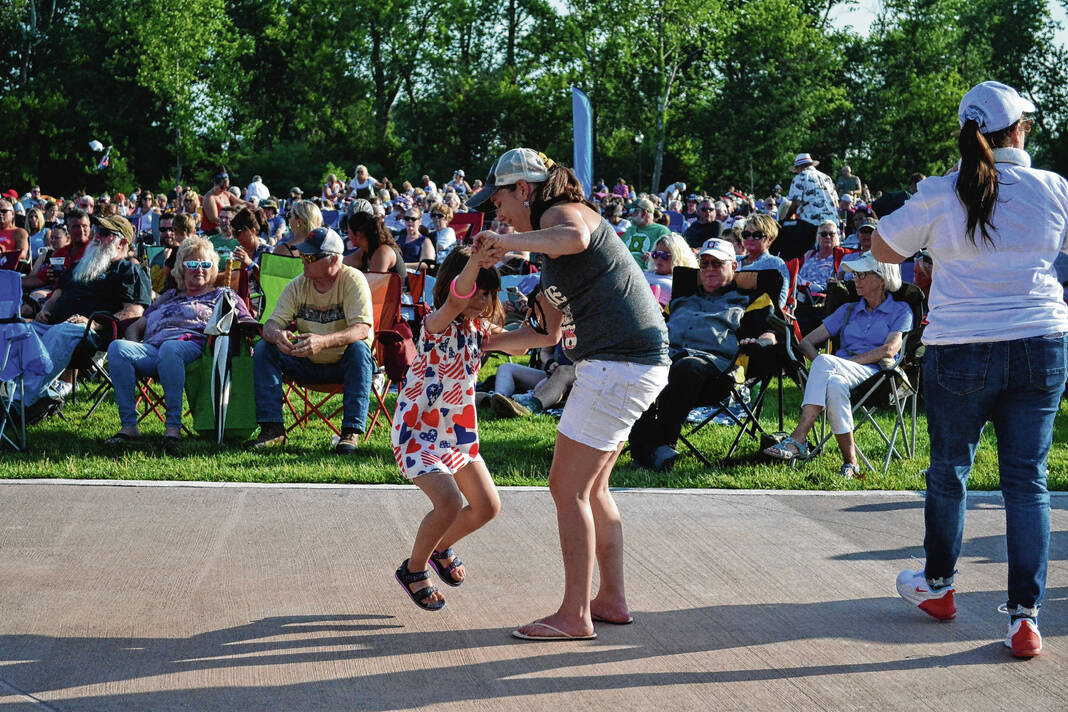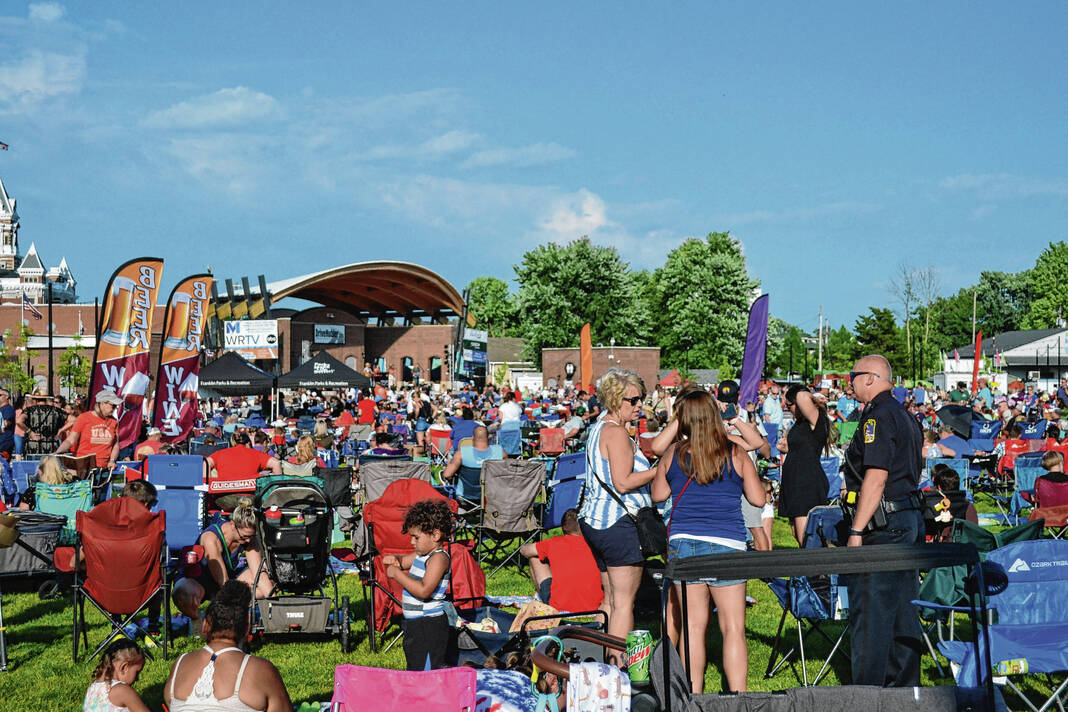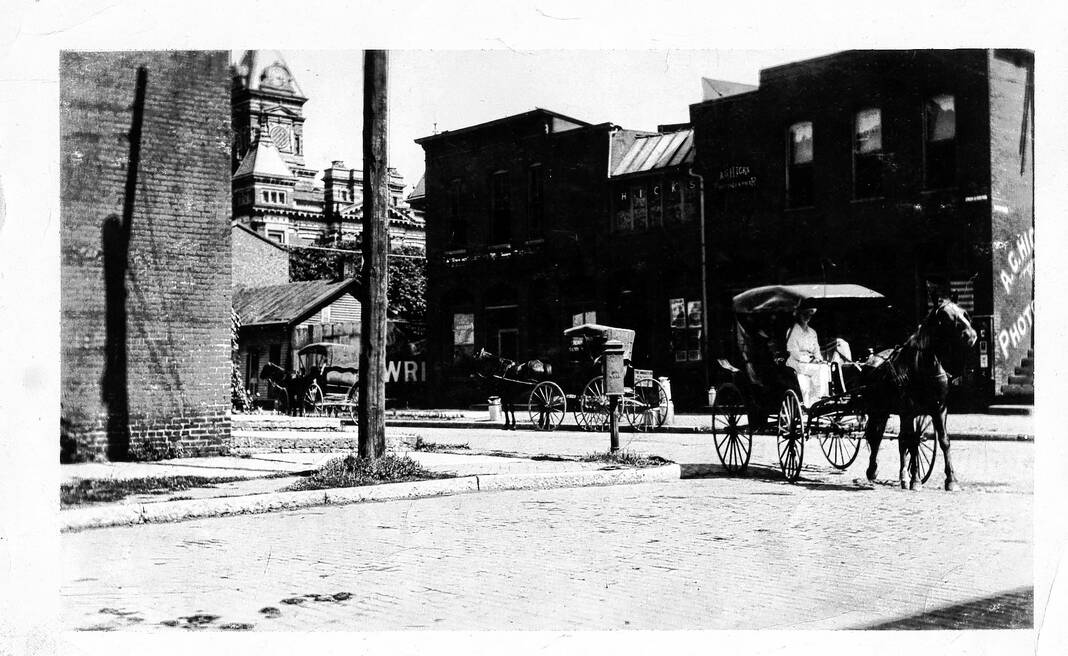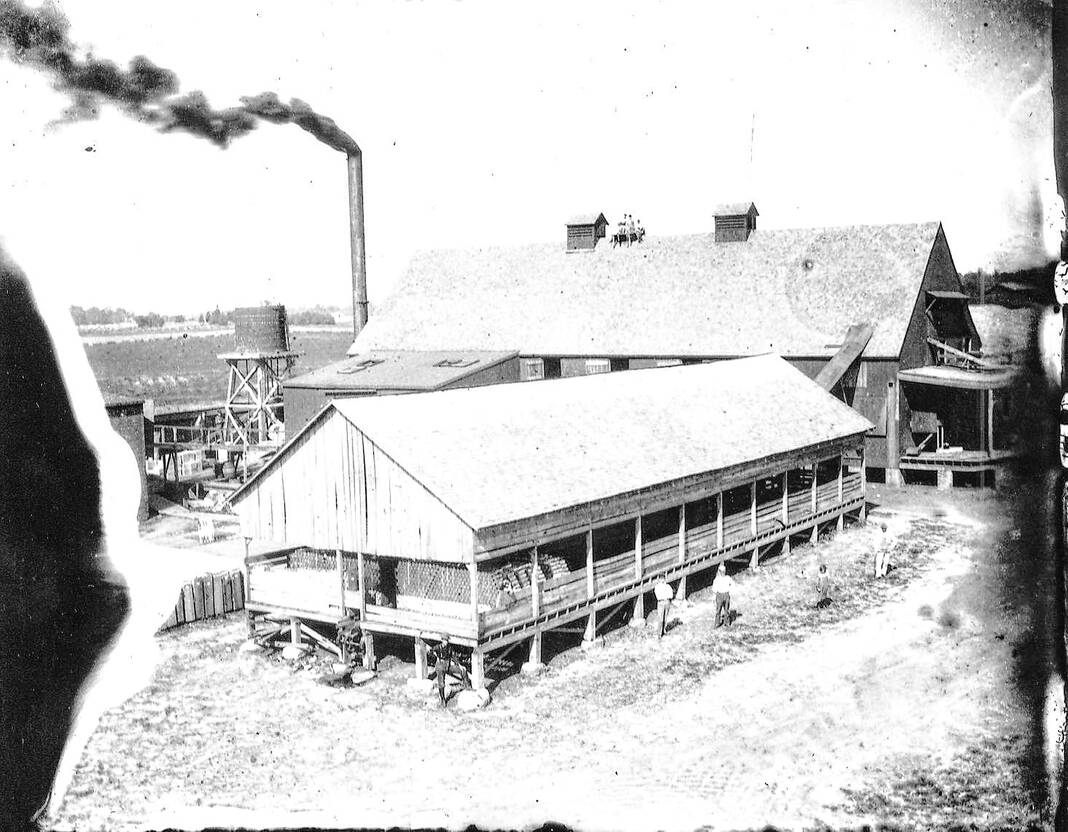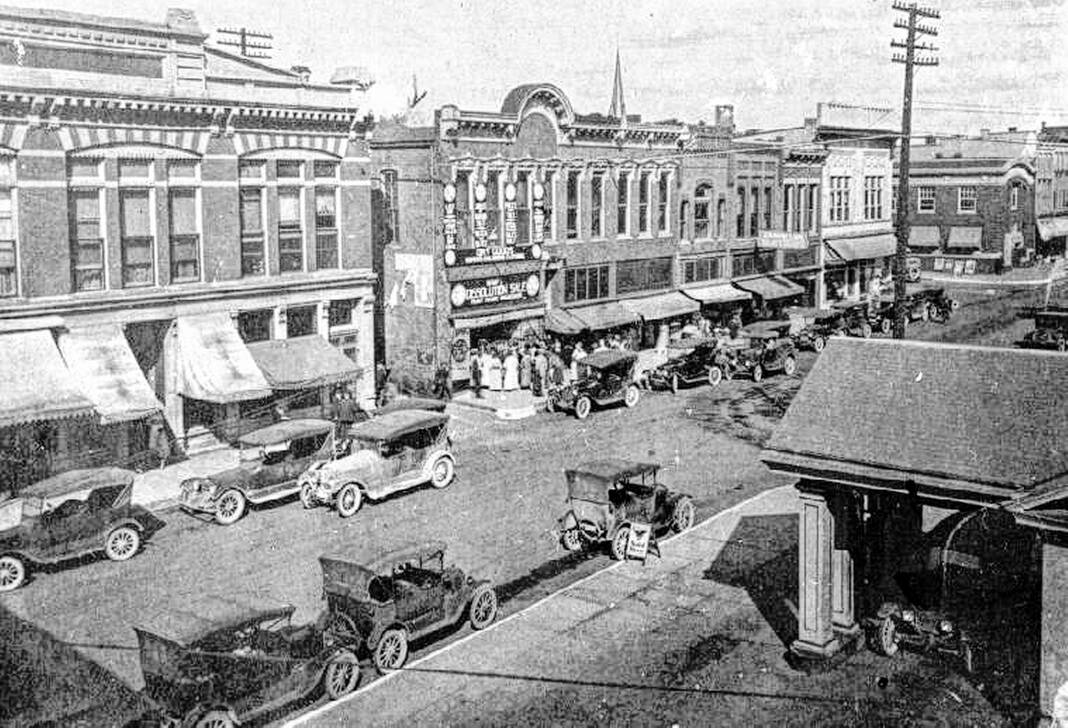After 200 years, Franklin’s party is just getting started.
The city celebrated its bicentennial during the Norman P. Blankenship Firecracker Festival, which along with the normal festivities, featured the presentation of a time capsule and a proclamation by Mayor Steve Barnett to mark the city’s milestone.
From the city’s founding with 40 acres and 250 people, it has grown to 9,080 acres and over 25,000 people. That growth was powered by its proximity to the state capital and its rich soil, but most of all the city’s people, Barnett said in the proclamation.
“The city of Franklin honors the history of local schools, churches, businesses and organizations that laid the city’s foundation. Franklin has a rich heritage, with roots in agriculture, railroad and commerce, while recognizing that the backbone of the city of Franklin has always and will continue to rest on the people. You the people. We the People. That’s what makes Franklin, Indiana what it is today,” he said.
Franklin’s Bicentennial Committee chose to mark the occasion at the Firecracker Festival and with a time capsule. However, the time capsule isn’t finished yet, but will be a work in progress throughout the rest of the year, said Holly Johnston, Franklin Parks and Recreation community events coordinator.
Currently, some items in the time capsule include the proclamation, brochures for Festival Country Indiana and Franklin Family Aquatic Park, restaurant menus, t-shirts made for the bicentennial, items that residents suggested, racing memorabilia contributed by Barnett, the Discover Downtown Franklin annual Christmas ornament and more.
The capsule will be displayed at Franklin City Hall until it is complete, then it will be tucked away to be opened in 25 years, on July 3, 2048.
“Hopefully a lot of us will still be alive then,” Johnston said.
The capsule presented at the ceremony was in a temporary box, and the collection is already outgrowing the space. City officials will ultimately seal away the capsule in another container, said Tara Payne, Barnett’s chief of staff.
Residents can see the capsule on the first floor of city hall, where it will be displayed on an armoire alongside a display on Kuji, Japan, Franklin’s sister city, she said.
Franklin’s founding
Franklin’s founder George King had come up from Kentucky in 1822 looking to purchase land in the newly opened territory. When King came to the confluence of Youngs Creek and Hurricane Creek, he felt it was an ideal place to start a community, and purchased it.
Franklin was an untamed wilderness that had to be cleared out to build early settler homes and government buildings.

“It was found to be covered by a fine growth of beech, sugar tree, ash, walnut and poplar timber, while a tangled thicket of enormous spice brush grew up from underneath,” according to accounts of King’s findings in “A Historical Sketch of Johnson County, Indiana” by D.D. Banta.
It is said that after a day of cutting through brush with fellow settlers to reach his homesite, King laid down in a tent with a severe thunderstorm raging around him and wondered what he had gotten himself into, Banta’s book recounts. The early days were tough, but his investment in Franklin helped set the city and Johnson County up for growth that’s still happening today.
His advocacy at the Indiana Statehouse resulted in Franklin and Johnson County’s founding in 1823. He won the race to make Franklin the county seat in competition with settlements in Edinburgh and White River Bluffs, which is today the Center Grove area, according to an article in Nostalgia News, the Johnson County Museum’s newsletter.
The county and city center was formed with 40 acres of the land King had purchased and donated to the fledgling government. Years later, King also donated land to found Franklin College, which has been educating area students since 1834, according to Nostalgia News.
Franklin was named for Benjamin Franklin at the suggestion of Samuel Herriot, Johnson County’s first county clerk. He had just read a biography of the famed inventor and decided to honor him by naming the new county seat for him, said David Pfeiffer, Johnson County Museum director.
Early years of Franklin
Early homes were rough-hewn log cabins built on land they cleared with only hand tools and the drive to get the job done. The area was so wild and the forests so thick that animals such as bears and rattlesnakes inhabited the land. Lewis Hendricks, who built the log cabin that is today displayed at the museum, survived a bear attack, Pfeiffer said.
The pioneering residents came to Franklin to start a new life on Indiana’s developing frontier. They were staking their claim as pioneers in surrounding counties and cities were doing the same, Pfeiffer said.
A big driver of Franklin’s growth over the years has been its proximity to Indianapolis. Franklin was formed during a rush to settle around the state capital following its relocation from Corydon to Indianapolis. With that came prime trade routes that made it attractive to business and industry, including early dirt roads that served as highways and later railroads and interstates, Pfeiffer said.
Other factors in early growth included Franklin’s status as the county seat, the founding of Franklin College and Hopewell Academy, which was once a prestigious college-prep school, Pfeiffer said.
Franklin’s early occupations included farmers, tradesmen and just a few county employees. King, for example, was a wheelwright, meaning he made and sold wagon wheels for a living, historical records show. Many early trades such as hatters, wheelwrights, saddlers and so on have faded into the past, with people today buying goods online and in big box stores. Others such as doctors and farmers have stood the test of time.
Early industries in Franklin included canning factories, garment factories and machine parts factories, which later gave way to car parts.
The canning industry was an integral growth area for not only Franklin but also Trafalgar and Greenwood.
“From the ‘20s to the ‘40s, we were kind of a powerhouse,” Pfeiffer said.
In its heyday, Arvin Industries was one of the largest employers around. At different times over the decades, the company has manufactured car parts and household appliances, Pfeiffer said.
Moving Franklin forward
From the early years to now, pioneers wouldn’t recognize the city, though some things haven’t changed. One thing that’s been constant is the importance of downtown Franklin and the land around the courthouse square.
“Franklin has done a good job trying to balance the importance of agriculture — that’s been the foundation of Franklin — and growing industry,” Pfeiffer said. “But also now they’re kind of making sure they’re keeping that small town feel around the courthouse.”
Fires have changed the face of the courthouse over the years, but it has sat on the same block since court business outgrew the homes of early county officials. The current courthouse was built in 1882, Pfeiffer said.
The 2008 flood, the second devastating 100-year flood that Franklin has weathered since its founding, influenced the downtown reinvigoration that Franklin has been undergoing in the years since. The destruction sparked an interest in creating more green space in flood-prone downtown areas. That interest lead to the years-long process to build Youngs Creek Park which was started by a group of city stakeholders under former mayor Joe McGuinness and culminated in 2022 under Barnett’s administration.
Downtown had already been in decline because of the ever-growing list of big box stores along U.S. 31 that decimated the local businesses that had once thrived downtown. The flood was the push the community needed to focus on reviving downtown to being a destination like it once had been, Barnett said.
With festivals and concerts at the DriveHubler.com Amphitheater at Youngs Creek Park drawing thousands downtown most weekends in the summer and into the fall, Franklin’s downtown is thriving again. Most storefronts downtown are now full of shops selling vintage goods, handmade, boutique clothing and Indiana-grown groceries. There are also a wide variety of restaurants and coffee shops.
Not just downtown, industrial and logistics parks at Interstate 65 and along Earlywood Drive are being built out, while over 1,000 homes are set to be built in new neighborhoods on all sides of the city, while several sets of high-end condos are being built downtown and market-rate apartments are being built on King Street and Upper Shelbyville Road.
With all of those areas of growth, Barnett says the city is set to stay prosperous as residents look ahead to the next milestone. He can’t speak for where things will be in 200 years, but for at least the next 20 years, the city will have continued growth and be on solid financial ground.
“We have a bright future. In the next 20 years, we are going to keep growing at a nice, slow pace,” he said.
His goal is to keep laying out a path for growth, but also the preservation of the “small town feel” and sense of community that residents treasure.
“We are just trying to lay a good foundation for the generations that come after us,” Barnett said. “The people before us also laid a good foundation.”


